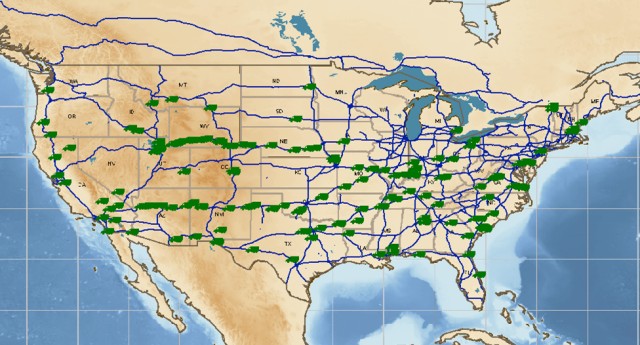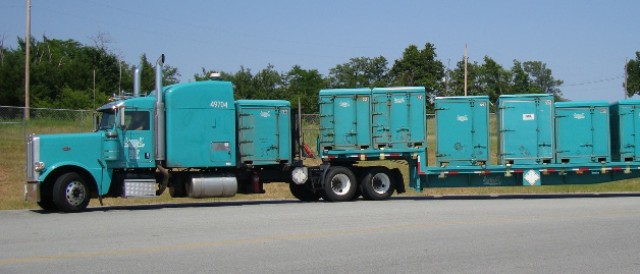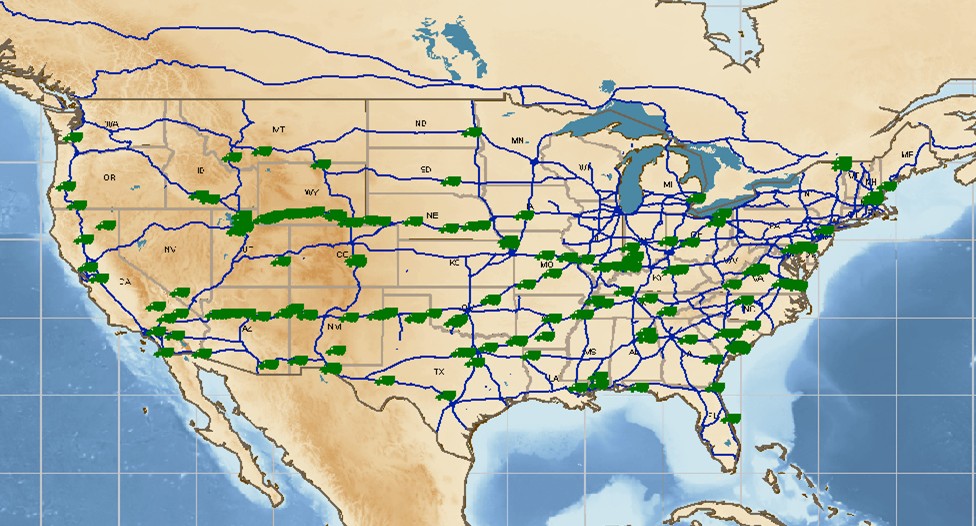A two-driver team was carrying a shipment of firearms from California to Indiana in June when one of the drivers received news of a death in the family. Under Department of Defense regulations, any hazardous shipments must be transported by a team of two drivers, and the driver was worried that he would be unable to get home to be with his family.
Thanks to the Defense Transportation Tracking System (DTTS), the team was able to quickly inform Military Surface Deployment and Distribution Command (SDDC) and secure a waiver allowing the truck to move on with only one driver. The released driver made it home to his family and the shipment continued uninterrupted to its destination.
DTTS is DODAca,!a,,cs way of keeping tabs around the clock on various types of sensitive and hazardous materials in transit, also providing instant communication to help drivers, emergency responders and SDDC deal with unexpected situations.
Using satellite communications, DTTS keeps track of all Arms, Ammunition and Explosives (AA&E) and other sensitive material traveling across the United States. Their efforts support SDDCAca,!a,,cs goal of providing in-transit visibility and total asset visibility on AA&E shipments and other sensitive or classified cargo.
As part of SDDCAca,!a,,cs support of the total force, DTTS-approved carriers operate trucks for every military service.
Any commercial carrier that wants to carry AA&E must prove their dependability to SDDCAca,!a,,cs Strategic Business Directorate by first carrying less dangerous or essential cargo. The carrier must then get the proper satellite equipment as mandated by DTTS. Every truck transporting AA&E or sensitive material has to be in constant satellite communication during its trip.
DTTS receives periodic updates from properly equipped trucks in transit around the clock. These pings update DTTS on the truckAca,!a,,cs position and match the signal with information from a DTTS database about the truckAca,!a,,cs cargo, origin and destination.
Aca,!A"We get these signals from trucks every 15 minutes all across the country,Aca,!A? said DTTS representative Bill Maham. Aca,!A"Ping the satellite and match it to the DOD cargo manifesting systems, ping and match.Aca,!A?
If the signal gets interrupted, DTTS personnel get on the phone to find out whatAca,!a,,cs going on.
In addition to the continuous ping system, all vehicles transporting AA&E or sensitive cargo are required to install a panic button. Drivers have a red button on the dash, and a secondary means to immediately inform DTTS and the satellite service provider of an emergency.
The panic buttons allow carriers to inform DTTS within seconds of any emergencies during shipment. In practice, Maham said it generally takes around 20 or 30 seconds for DTTS to get the alert. DTTS operators get a message about a potential issue and they go to work. This ability to get up-to-the-minute information about any incident is central to DTTSAca,!a,,cs mission.
In the event of a major emergency, DTTS personnel contact the emergency services investigating the incident. They inform police, who in turn bring in required EMTs and firefighters to the accident. Just as importantly, DTTS must be able to tell what type of shipment is on the truck.
Aca,!A"WhatAca,!a,,cs in the truck is important,Aca,!A? said DTTS program manager Dan Bradley. Aca,!A"We have to be able to tell the emergency workers whatAca,!a,,cs in the back so they know if itAca,!a,,cs dangerous.Aca,!A?
AA&E is divided into security risk categories depending on how high-risk the cargo is. This allows DTTS to prioritize simultaneous emergencies and also allows them to keep emergency workers informed on the dangers they may be facing.
Earlier this year, SDDCAca,!a,,cs Intelligent Road/Rail Information Server (IRRIS) partnered with information technology company GeoDecisions to expand DTTSAca,!a,,cs capabilities to include trailer tracking. This brings heightened security to the DTTS operation.
Trailer Tracking Service (TTS) went live in February. In addition to tracking trailers in transit, the system informs DTTS operators when a trailer is unhitched from its truck or a trailer door is opened. With TTS, DTTS can keep track of a shipment even if the trailer and truck separate, allowing for even greater in-transit visibility.
In addition to tracking trucks and trailers, DTTS has been working on tracking other modes of transportation in order to bring in-transit visibility down to fewer systems. In a recent test, Maham said that they successfully tracked shipments by truck, rail and sea all the way from a factory in Utah to soldiers in Iraq.
Aca,!A"For years this has been the dream at U.S. Transportation Command to track cargo from factory to foxhole,Aca,!A? said Maham. Aca,!A"We just did it.Aca,!A?




Social Sharing